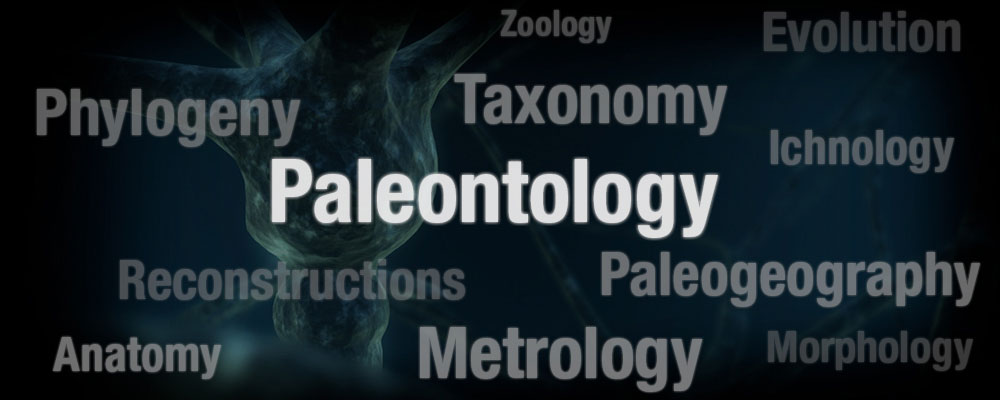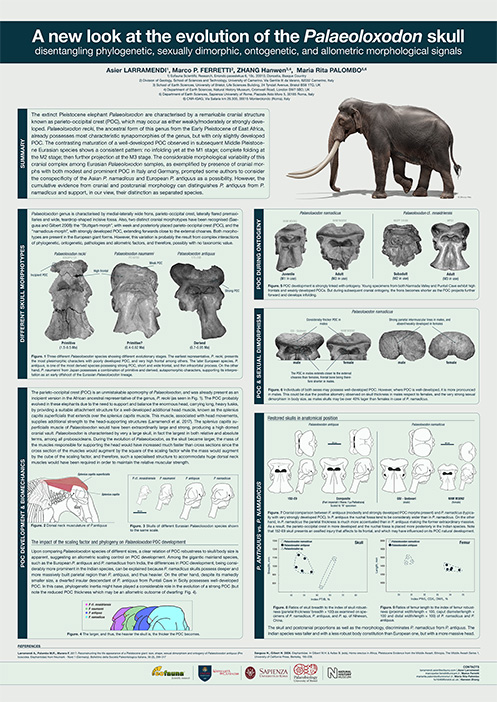
Publications > Straight-tusked elephants from Neumark-Nord 1
- Bruhathkayosaurus body mass
- Dinosaur densities press release
- Tetrapod body densities
- Sauropod Encyclopedia
- Palaeoloxodon skull evolution
- Palaeoloxodon poster
- Theropod Encyclopedia
- P. antiquus from Germany
- The Body Size of Proboscideans
- Siculo-Maltese dwarf elephants
- Songhua River Mammoths
- Dinogeography
Authors: Asier Larramendi; Marco Ferretti; Zhang Hanwen; Maria Rita Palombo
(Annual Meeting of the Palaeontological Association 2018)

The extinct Pleistocene elephant Palaeoloxodon are characterised by a remarkable cranial structure known as parieto-occipital crest (POC), which may occur as either weakly/moderately or strongly deve¬loped. Palaeoloxodon recki, the ancestral form of this genus from the Early Pleistocene of East Africa, already possesses most characteristic synapomorphies of the genus, but with only slightly developed POC. The contrasting maturation of a well-developed POC observed in subsequent Middle Pleistoce¬ne Eurasian species shows a consistent pattern: no infolding yet at the M1 stage; complete folding at the M2 stage; then further projection at the M3 stage. The considerable morphological variability of this cranial complex among Eurasian Palaeoloxodon samples, as exemplified by presence of cranial mor¬phs with both modest and prominent POC in Italy and Germany, prompted some authors to consider the conspecificity of the Asian P. namadicus and European P. antiquus as a possibility. However, the cumulative evidence from cranial and postcranial morphology can distinguish P. antiquus from P. namadicus and support, in our view, their distinction as separated species.
Poster access here





